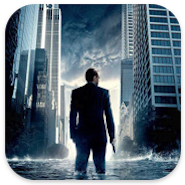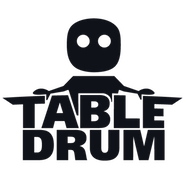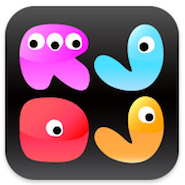
Augmented Audio
Augmented Audio is defined as live audio being modified and/or enhanced by computer-generated sensory input. By introduction of another layer of information or media on top of an input feed, it is possible to produce highly enriched audio feedback. The concept belongs in the Augmented Reality (AR) family, but has started to distingish itself as an important independent application area due to recent media attention. New innovative implementations have shown that the concept is applicable in many different contexts, including tourism, location-oriented communication and information sharing, gaming and entertainment and even as a distinctive new interaction technique.
Developers have started to embrace the possibilities of augmenting the experiences of real-world encounters; providing incentive to stimulate new ways of experiencing, rather than merely instructing software. This webpage is envisioned to become a central communication channel for interesting flow of ideas, examples and source of information regarding the subject. Below are inspirational examples in application areas that harness the power of Augmented Audio.
Tourism
 Museums and other public attractions can utilize audio tours that customize what a visitor hears. Smartphone applications can offer personalized choice of language, length of content and level of detail. By placing QR- codes next to exhibit items, visitors can easily trigger any desirable action by scanning it.
Museums and other public attractions can utilize audio tours that customize what a visitor hears. Smartphone applications can offer personalized choice of language, length of content and level of detail. By placing QR- codes next to exhibit items, visitors can easily trigger any desirable action by scanning it.
Location-aware techniques such as GPS and Mobile Network Triangulation may allow both static objects to communicate with each other as well as offering users the opportunity to collectively assemble location-specific information. Together we can create entire cities filled with geo-tagged content. With the already mature applications that exist in the location application space, such as Google Maps and Google Latitude, the experience can be improved by extending the feedback with audio. The combination will effectively create an entirely audiovisual experience.
 Toozla is a mobile service that combines a global positioning system with audio tours and stories, user content, and local information, to give you an all-in-one travel guide that you can take with you everywhere. Discover hidden facts about places, buildings, monuments, and much more. Do this from the locals that already know the best places.
Toozla is a mobile service that combines a global positioning system with audio tours and stories, user content, and local information, to give you an all-in-one travel guide that you can take with you everywhere. Discover hidden facts about places, buildings, monuments, and much more. Do this from the locals that already know the best places.
Gaming
 Inception is an application that uses augmented sound to induce dream-like sound sequences through the headphones of an iOS device. The application consists of several different soundscapes that are triggered when certain conditions apply. The conditions are not known before hand, creating a game-like component where users attempt to find and initate new sequences.
Inception is an application that uses augmented sound to induce dream-like sound sequences through the headphones of an iOS device. The application consists of several different soundscapes that are triggered when certain conditions apply. The conditions are not known before hand, creating a game-like component where users attempt to find and initate new sequences.
 TableDrum augments audio, changing the way users create music. It relies on an intelligent sound classification engine that can be taught to identify and map actions to virtually any audible input. Teaching the application will allow the user to construct a virtual drum set from everyday objects, where each contact sound represents a distinct drum component.
TableDrum augments audio, changing the way users create music. It relies on an intelligent sound classification engine that can be taught to identify and map actions to virtually any audible input. Teaching the application will allow the user to construct a virtual drum set from everyday objects, where each contact sound represents a distinct drum component.
 RJDJ combines incoming real-world sound with normal music to create a unique audio experience that differs depending on the place and situation you are in. It is safe to say that the results are unexpected.
RJDJ combines incoming real-world sound with normal music to create a unique audio experience that differs depending on the place and situation you are in. It is safe to say that the results are unexpected.
 Konstruct is an application that uses the microphone to capture ambient sounds to influence the creation of geometric shapes on the fly. Use the camera to capture a shape then whistle, blow or speak into the microphone to augment it. The captured shapes support a relative 3D lock which is retained as the user shifts the camera around.
Konstruct is an application that uses the microphone to capture ambient sounds to influence the creation of geometric shapes on the fly. Use the camera to capture a shape then whistle, blow or speak into the microphone to augment it. The captured shapes support a relative 3D lock which is retained as the user shifts the camera around.
Future
Entertainment will see a rise of new programs that utilize Augmented Audio and Augmented Reality in various ways, and if Virtual Reality gaming (remember the clunky helmets of the 90s) is ever revived it will probably be through use of Augmented Reality. Museums and other tourism heavy sectors will utilize more customized visitor experiences that augments audio to suit what the tourists are interested in.
More and more services will allow people to tag places with their own recordings, images, videos or text. Eventually whole cities will be filled with geo-tagged content accessible to mobile phones. By tracking head movements it can be possible to create virtual surround sound in headphones, following the person's relative head position.
The innovative use of sound as direct input to control and interact with games and software as experienced in applications such as TableDrum and Konstruct is likely to become more widespread. Once developers realize the endless possibilities that the Augmented Audio concept unveils we will find ourselves expecting the unexpected, extending the human senses.
While most people have probably already been subjected to Augmented Reality in some context, the world is still waiting for the first real killer, must-have application that manages to harness the complete set of senses that can be stimulated with Augmented Reality in general, by inclusion of Augmented Audio in particular.
Copyright © 2011 Dohi Sweden AB
All rights reserved. Augmented Audio logo and brand is trademark of Dohi Sweden AB.